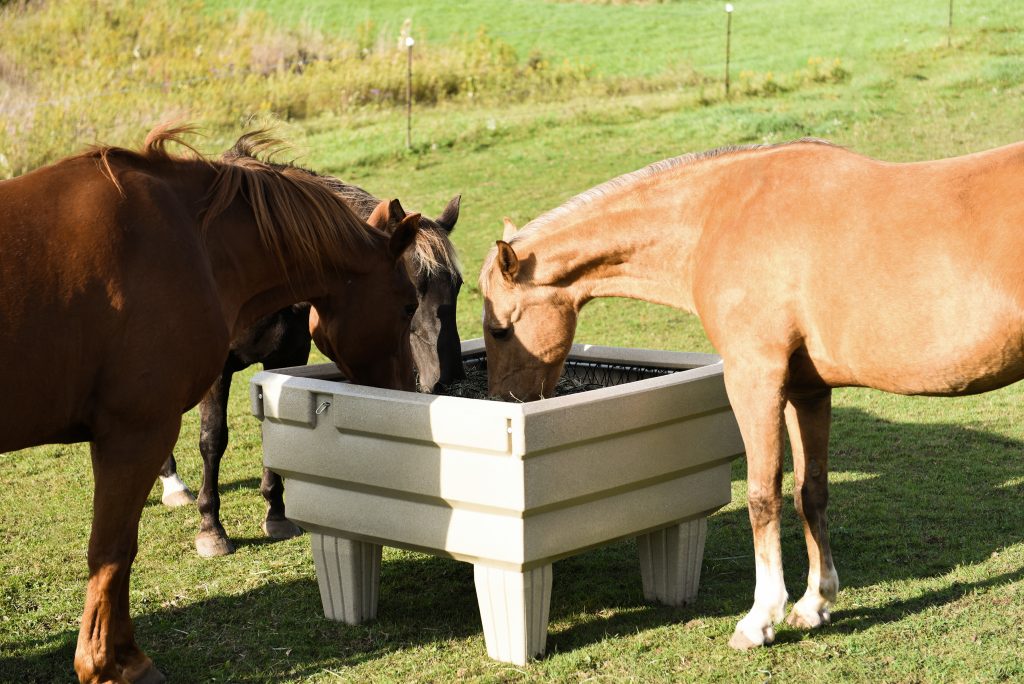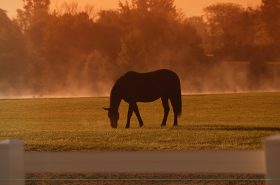If you have horses, understanding their digestive systems and feeding them appropriately is quite important.
Horses aren’t like us after all—needing a few meals a day to stay healthy. In fact, they digest food quite differently than we do. With that said, here are 10 fascinating (and good-to-know) facts about horse digestion:
1.As the horse’s natural food (forage) is chewed, the salivary glands produce up to 10 gallons of saliva per day. Saliva is crucial for neutralizing stomach acid and reducing the risk of gastric ulcers.
2. The esophagus, which empties into the stomach, only works in one direction for the horse. Food can go down but cannot come back up (as in regurgitation or vomiting).
3. Food only remains in the horse’s stomach for about 15 minutes before moving on to the small intestine.

4. When the stomach is empty, acid can attack the squamous cells in the stomach lining, often resulting in ulcers. This is why small frequent meals, using a slow feeder, or access to pasture are all important.
5. Horses do not have gall bladders. Instead, the duodenum (segment of small intestine) aids in the digestion of fats.
6. The bacterial and microbe populations in the GI system become specific in fermenting the type of food a horse normally eats. When a new food is introduced suddenly, the bacteria/microbes cannot ferment it effectively, and the result is often colic. This is why all feed changes should be made gradually.
7. Gut sounds (technically known as borborygmus) are a sign that food is moving through the digestive tract. An absence of gut sounds likely means there is a blockage somewhere in the intestine (aka colic).
8. At the very minimum, a horse needs to eat 1% of his body weight daily in long-stemmed roughage (grass/hay or hay replacers) for normal digestive tract activity. Consuming 2% of the bodyweight in forage is more ideal, however.
9. The entire digestive process (from mouth to manure) takes 36-72 hours for the horse.
10. If it were to be stretched from end to end, the horse’s digestive tract would be about 100 feet in length!



